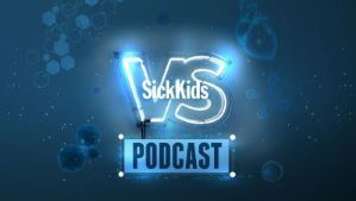Concussions can occur in any sport or recreational activity. Sport-related concussions are the most common type of concussion among older children and teenagers.
It is important for coaches, families and athletes to recognize and properly respond to concussions when they first occur to help prevent further injury and long-term problems.
How to recognize a possible sport-related concussion
To help recognize a concussion, watch for a forceful blow to the head or body that results in rapid movement of the head and any change in the athlete’s behaviour, thinking or physical functioning.
Signs and symptoms of sport-related concussion
The signs and symptoms of a sport-related concussion are similar to those from a regular concussion. However, a sport-related concussion often has more serious complications because athletes feel pressure to return to their sport before they are ready. This often puts athletes at a higher risk for multiple concussions.
Signs of concussion observed by coaching staff, parents and guardians
- Appearing dazed or stunned
- Confusion about assignment of position
- Forgetting plays
- Being unsure of game, score or opponent
- Moving clumsily
- Answering questions slowly
- Losing consciousness (even briefly)
- Behaviour or personality changes
- Inability to recall events before or after the hit or fall
Signs and symptoms of concussion reported by the athlete
- Headache or “pressure” in the head
- Nausea or vomiting
- Balance problems or dizziness
- Double or blurred vision
- Sensitivity to light or noise
- Sluggish, hazy, foggy or groggy feelings
- Concentration or memory problems
- Confusion
- Not feeling “right”
The signs and symptoms of concussion can show up immediately. However, in some cases, signs and symptoms evolve over a number of minutes to hours. If your child reports any symptoms of concussion or if you notice the signs yourself, take them out of play and seek medical attention right away.
If your child is removed from play for a suspected concussion, but has no signs or symptoms, they can return to play but should be monitored for 48 hours for delayed symptoms.
Effects of multiple concussions
Athletes with a history of concussion have increased risk of subsequent head injuries. Subsequent concussions are typically more severe, even when they occur with less force, and need a longer recovery time.
How to prevent and handle a sport-related concussion
Have your child wear the right protective equipment
Make sure that your child wears the right protective equipment for their sport. Protective equipment should fit properly and be well maintained. Helmets are not designed to prevent concussion, but wearing one is essential to reduce the risk of serious brain injury or skull fracture. Mouthguards can also play a role in preventing dental and facial bone injuries.
Encourage your child to play smart
Even if your child plays by the rules, they may still get hit hard enough to sustain a concussion. Teaching your child to play smart and avoid putting their body in a position of unnecessary harm will help them minimize the risk of serious injury while they play. Encourage your child to follow the rules of play and practice good sportsmanship at all times.
Coaches should be educated on concussion prevention and awareness
All individuals with a role in the sport should be educated on how to prevent concussions and other head injuries. Their knowledge should include the key areas within the Canadian Guideline on Concussion in Sport:
- The definition of concussion
- Possible causes of concussions
- Common signs and symptoms
- Steps that can be taken to prevent concussions and other injuries
- What to do if an athlete has suffered a concussion
- What measures should be taken to ensure proper medical assessment including a return-to-school and return-to-sport strategy
- Return-to-sport medical clearance requirements
Ask your child’s coaches and sports league what training they have received on concussion prevention and be cautious of individuals who are not aware of proper concussion prevention.
Take a conservative return-to-play approach
A repeat concussion, before the brain fully recovers from an earlier injury, can delay recovery or increase the chance of long-term problems. This is why it is important to take a conservative approach to your child's return to play.
Athletes who return to play too soon, while the brain is still healing, have a greater risk of repeat concussions. If your child has experienced a concussion, do not let them return to play on the day of injury until a health-care professional confirms that they are ready.
Consider developing a return-to-play strategy with your child’s health-care provider to protect your child from worsening symptoms.
Encourage your child to be open about symptoms
Athletes may not report their concussion symptoms for fear of losing playing time. Parents, guardians and coaches should create an open environment that supports reporting symptoms, proper evaluation and a conservative return-to-play approach.
Tell your child’s coach about any previous concussions. They may not know about a concussion your child received in another sport or activity.
Consider neuro-cognitive testing
For elite athletes in high-risk sports such as football and hockey, a health-care professional can perform baseline neuro-cognitive or neuropsychological testing before the start of the season. This type of testing measures an athlete’s balance and brain function, including learning and memory, concentration and problem solving, before they have any injury. If an athlete experiences a concussion during the season, the results of the baseline tests can help identify the effects of the injury and inform decisions about returning to school and play.
How to respond to a suspected sport-related concussion
There is a tendency in sport, especially in important games, for athletes to push through pain to demonstrate their toughness and their commitment to the team. However, playing through a concussion can be very dangerous for a child’s health. Never encourage this, whether you are a parent, guardian or a coach.
If your child has experienced a bump or blow to the head, even if it seems mild, look for signs and symptoms of concussion. Coaches, parents and guardians can use the Concussion Recognition Tool, 6th Edition (CRT6) to do a basic concussion test at the scene of the injury. The Sport Concussion Assessment Tool, 5th Edition (SCAT5) is a more detailed test of different aspects of brain function and should only be used by health-care professionals or by trainers and coaches who are trained in concussion testing.
Your child should sit out the rest of the game or practice. They should not be left alone, as sometimes symptoms of concussion may only appear several hours after injury. Never send a child home alone if you suspect a concussion: they should be with a responsible adult. Make sure that your child sees a health-care professional as soon as possible that day. Their symptoms should also be monitored closely over the next few days because symptoms may evolve over time. Your child should not return to play until a health-care professional says that it is okay. Your child may need a post-concussion management plan.
If your child is knocked out, call an ambulance right way. Do not move them or remove sport equipment in case their neck or spinal cord is injured.
Need more information?
Parachute is an excellent web-based resource for parents, caregivers, teachers and coaches.
SickKids VS takes you to the frontlines in the fight for child health, where big questions drive big breakthroughs: Where do we start when a child’s disease is unknown? Can we heal the brain? How should we talk to kids about dying? Behind each quest, is a remarkable family and story. Listen now and subscribe.
CAN WE HEAL THE BRAIN? SickKids VS Brain injury
Sources
Parachute Canada (March 12, 2024). Canadian Guideline on Concussion in Sport (2nd edition).
The Concussion Recognition Tool 6 (CRT6). British Journal of Sports Medicine 2023;57:692-694. Retrieved from: https://bjsm.bmj.com/content/57/11/692.
Sport concussion assessment tool - 5th edition. British Journal of Sports Medicine 2017;51:851-858. Retrieved from: https://bjsm.bmj.com/content/51/11/851.
Canadian Paediatric Society (2023). Sport-related concussion and bodychecking in children and youth: Evaluation, management, and policy implications.
Parachute (2018). Return-to-Sport Strategy Guideline.
Canadian Paediatric Society (2013). Management of the paediatric patient with acute head trauma.
Ontario Neurotrauma Foundation (2020). Living Guideline for Pediatric Concussion.

